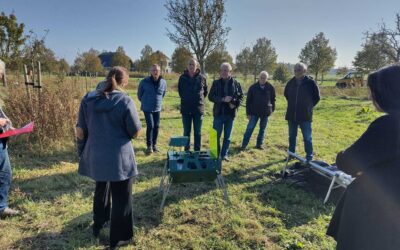Not only in the Netherlands we want to know better how insects are doing, also internationally there is a lot of attention for the development of cameras to monitor insects. DIOPSIS is part of a consortium, called Easy RIDER, which has received funding from the UK Research & Innovation fund to build international partnerships and networks specifically aimed at insect monitoring. One of the goals of this project is to test several new insect cameras in an environment where this has not yet been done: the tropics. So we traveled with a small group of delegates to Barro Colorado Island in Panama.
Barro Colorado, dream of every biologist
Barro Colorado is an island of over 15 km2 in the middle of the Panama Canal. The entire island is fully protected as a nature reserve and is managed by the Smithsonian Institution. They have a permanent research center on the island where over 50 researchers can stay. This makes it the most studied piece of tropical rainforest in the world. DIOPSIS project leader Chantal Huijbers is a graduate biologist and got to spend a week on Barro Colorado Island to test the DIOPSIS camera. For her, it was a dream come true: a week immersed in the rainforest with the many sounds of monkeys, birds, insects, away from civilization, and seeing how the DIOPSIS camera works in such a new environment. In addition, it was also the ideal opportunity to exchange experiences with this international group about monitoring insects with smart cameras.

Right: a photo of the camera with special LepiLED lights to attract even more moths.
Tropical insect diversity in all shapes and sizes
The DIOPSIS camera was tested for 4 days and nights in Panama. At night we also experimented with other lighting that has a UV range that attracts more moths. The camera worked well even with warm temperatures and photographed many cool insects. Of course, the DIOPSIS image recognition algorithm is not yet trained to identify these insects, but if international work is done to annotate more insect species, we can eventually create algorithms that recognize species in other countries. Then DIOPSIS will also become internationally applicable!

Very occasionally a slightly larger creature passes by like this coati in the upper right.





